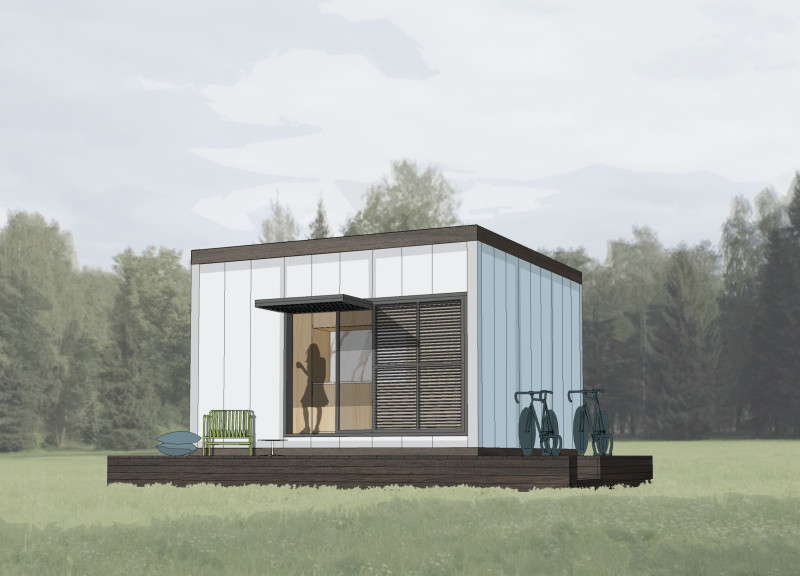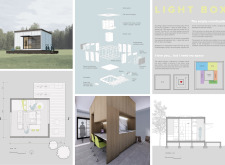5 key facts about this project
Spatial Organization and Functionality
The layout of the Light Box features a central unit that seamlessly combines living, working, and dining areas. This design promotes efficient use of space, allowing for distinct yet interconnected zones. The inclusion of workspaces caters to the increasing trend of remote work, thus enhancing the building's overall utility. Operable sliding glass doors facilitate an indoor-outdoor connection, optimizing natural light and creating a sense of openness within the compact structure. The organization reflects a careful balance between private and communal areas, essential for modern living.
Sustainable Design Approaches
The project incorporates innovative materials and technologies that distinguish it from typical housing solutions. The timber structure provides a sustainable and aesthetically pleasing framework, while polycarbonate sandwich panels enhance insulation and daylighting. The use of aluminum louvers not only serves functional purposes, such as reducing glare and providing privacy, but also contributes to a contemporary architectural appearance. Additionally, energy-efficient systems including solar panels, a bicycle generator, and a rainwater harvesting setup promote self-sufficiency and reduce reliance on external resources. This focus on environmental responsibility encapsulates a forward-thinking approach in architectural design.
Material Selection and Execution
The Light Box employs a range of materials that further its sustainable ethos while ensuring durability and functionality. Timber is utilized extensively throughout, supporting both the structural integrity and environmental objectives of the project. The epoxy finished flooring enhances resilience and comfort, featuring an underfloor heating system to address temperature fluctuations. Externally, timber decking enhances the outdoor space, fostering a connection with nature and reinforcing the project's overall design philosophy.
The architectural design of the Light Box exemplifies how modern living can be approached with a focus on efficiency, sustainability, and aesthetic coherence. To gain deeper insights into its design and operational elements, readers are encouraged to explore the project's architectural plans, sections, and ideas, which provide a comprehensive overview of the innovative approaches utilized in this project.























